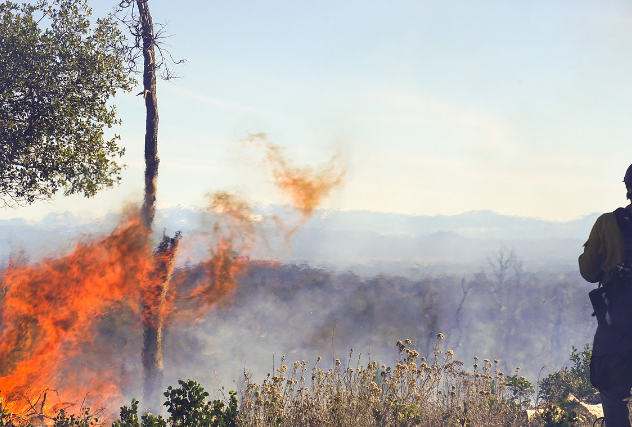
How to Prepare for Wildfire Season in Oregon, Washington, and Idaho
Discover essential tips and expert advice on how to prepare for wildfire season in Oregon, Washington, and Idaho. Learn about creating a comprehensive wildfire preparedness plan, safeguarding your home, and staying safe during these challenging times.
Introduction
Wildfire season in the Pacific Northwest, especially in states like Oregon, Washington, and Idaho, can be devastating and unpredictable. As climate change continues to impact weather patterns, the frequency and intensity of wildfires are on the rise. It is crucial for residents in these regions to be well-prepared and equipped to handle such emergencies. In this comprehensive guide, we will explore practical steps and expert advice on how to prepare for wildfire season in Oregon, Washington, and Idaho.
How to Prepare for Wildfire Season in Oregon, Washington, and Idaho
Understanding the Wildfire Risks in Your Area
It’s essential to begin your preparations by understanding the specific wildfire risks in your local area.
Wildfires are more prevalent in areas with dry and hot weather conditions, abundant fuel sources, and strong winds. Research past wildfire incidents and pay attention to the recommendations issued by local authorities and the U.S. Forest Service. Create a wildfire risk map that highlights high-risk zones near your property.
Creating a Wildfire Preparedness Plan
Developing a wildfire preparedness plan is crucial to safeguarding your family, home, and belongings.
- Gather Emergency Supplies Prepare an emergency kit containing essentials like non-perishable food, water, first-aid supplies, flashlights, and batteries. Keep the kit in an easily accessible location.
- Create an Evacuation Plan Design an evacuation plan with clear escape routes and meeting points. Practice the plan with your family to ensure everyone knows what to do in case of an evacuation order.
- Keep Important Documents Safe Safeguard essential documents, such as identification papers, insurance policies, and property records, in a fireproof and waterproof container.
Safeguarding Your Home and Property
Your home and property are susceptible to wildfire damage, but there are steps you can take to minimize the risks.
- Clear Defensible Space Create a defensible space around your home by clearing flammable vegetation, dead leaves, and debris. Maintain a minimum of 30-40 feet of space between your home and nearby vegetation.
- Use Fire-Resistant Materials Opt for fire-resistant roofing materials and siding. Install fire-resistant screens on windows and vents to prevent embers from entering your home.
- Clean Gutters Regularly Keep your gutters free from debris to prevent the accumulation of flammable materials.
Firewise Landscaping and Planting
Landscaping practices play a significant role in wildfire prevention.
- Choose Fire-Resistant Plants Select plants that are less likely to ignite and create a fire-resistant landscape around your home.
- Maintain Proper Spacing Plant trees and shrubs with adequate spacing between them to reduce the potential spread of fire.
- Regularly Prune and Remove Dead Vegetation Regularly prune trees and shrubs and remove dead vegetation from your yard to minimize fuel sources for wildfires.
Home Fire Safety Systems
Investing in home fire safety systems can provide an added layer of protection during wildfire season.
- Install Smoke Detectors Install smoke detectors on each floor of your home, including the basement and garage. Test them regularly to ensure they are functioning correctly.
- Consider Sprinkler Systems If possible, install a home sprinkler system to douse potential sparks and embers.
Staying Informed During Wildfire Season
Staying informed about current wildfire situations is vital for your safety and preparedness.
- Sign up for Alerts Register for local emergency alert systems to receive timely notifications about wildfires and evacuation orders.
- Follow Local Authorities and News Channels Stay connected with local authorities and news channels for up-to-date information on wildfire incidents and containment efforts.
Wildfire Safety for Pets and Livestock
- Prepare an Emergency Kit for Pets Create a pet emergency kit containing food, water, medications, and comfort items for your furry companions.
- Have a Plan for Livestock Evacuation If you have livestock, establish a plan for their evacuation to safe locations during wildfires.
Wildfire Preparedness for Travelers and Tourists
- Check Wildfire Conditions Before traveling to the Pacific Northwest during wildfire season, check the current wildfire conditions in your destination.
- Follow Local Guidelines Abide by local guidelines and evacuation orders if you find yourself in a wildfire-affected area.
How to Stay Safe During Wildfires
Knowing how to stay safe during a wildfire is critical to survival.
- Stay Informed Continuously monitor local news and official sources for updates and safety instructions.
- Evacuate Early if Necessary If evacuation orders are issued, don’t delay. Evacuate early to avoid getting caught in dangerous situations.
- Use N95 Masks for Air Quality If smoke and ash are present, use N95 masks to protect your lungs from harmful particles.
Frequently Asked Questions (FAQs)
- What are the main causes of wildfires in Oregon, Washington, and Idaho? Wildfires in these states are often caused by lightning strikes, human activities like campfires, discarded cigarettes, and sparks from machinery.
- Are wildfires becoming more frequent in the Pacific Northwest? Yes, due to climate change and drier conditions, wildfires are becoming more frequent and intense in the Pacific Northwest.
- Can I protect my home from wildfires if I don’t live in a high-risk area? While living in a high-risk area increases the likelihood of wildfires, it’s still essential to take preventative measures to protect your home and property.
- What should I include in my family’s emergency kit? Your family’s emergency kit should include non-perishable food, water, first-aid supplies, flashlights, batteries, important documents, and personal medications.
- What should I do if I become trapped in a wildfire? If trapped, find a clear spot away from vegetation, cover yourself with clothing or a blanket, and lie face down to protect yourself from heat and embers.
- What should I do if I become trapped in a wildfire? If trapped, find a clear spot away from vegetation, cover yourself with clothing or a blanket, and lie face down to protect yourself from heat and embers. Keep in mind that staying low and covering up can offer some protection, but the best course of action is to avoid getting into such a situation in the first place by staying informed and following evacuation orders.
Conclusion
In conclusion, preparing for wildfire season in Oregon, Washington, and Idaho is crucial for protecting your family, home, and community. By understanding the risks, creating a comprehensive preparedness plan, safeguarding your property, and staying informed during wildfire season, you can increase your chances of staying safe during these challenging times. Remember to check for wildfire alerts regularly, evacuate early if necessary, and always prioritize your safety and the safety of others.
Wildfires are a natural part of the ecosystem, but with climate change and human activities contributing to their increasing frequency and intensity, being prepared is more important than ever. Taking proactive measures and having a well-thought-out plan can make a significant difference in minimizing the impact of wildfires on your life and property.
Remember, wildfires can spread rapidly, and conditions can change quickly. It’s crucial to stay informed, follow guidelines from local authorities, and have a clear evacuation plan in place. Your safety and the safety of your loved ones should always be your top priority.
Stay vigilant, take the necessary precautions, and be prepared. Together, we can work towards a safer and more resilient community during wildfire season in Oregon, Washington, and Idaho.
LEARN MORE
For even more info, visit National Interagency Fire Center here: https://www.nifc.gov/

